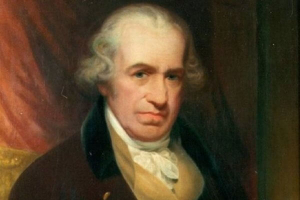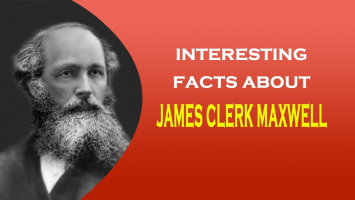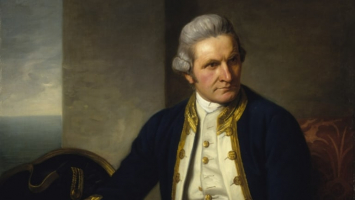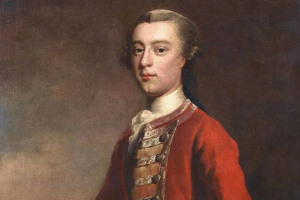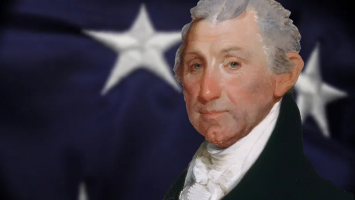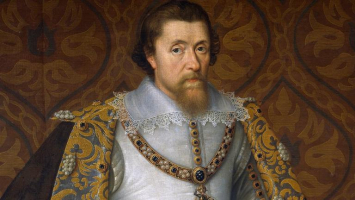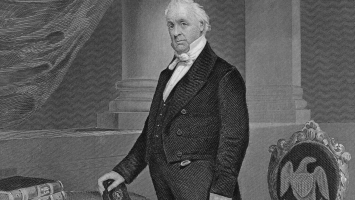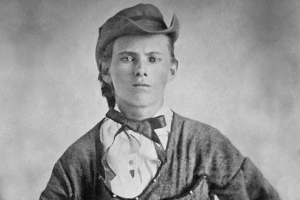Top 10 Interesting Facts About James Garfield
On November 2, 1880, James Garfield was chosen as the country's 20th president after being nominated as a compromise candidate at the Republican National ... read more...Convention in Chicago the year before. Garfield won the popular vote by the narrowest margin in U.S. history less than 10,000 votes despite his clear electoral victory of 214 votes. According to the evidence, James Garfield was a ferocious federalist and opponent of corruption. He was a fervent supporter of civil rights and a proponent of hard money policies. So, to have deep knowledge about his life, let’s explore these ten most interesting facts about James Garfield below!
-
Garfield, the last president to be born in a log cabin, was the child of Abram Garfield and Eliza Ballou, who carried on managing the struggling Ohio farm following her husband's passing in 1833. Growing up, Garfield loved reading adventure books and dreamed of being a sailor. He once claimed, "Nautical novels did it. My mother tried to divert my attention, but the books were intriguing precisely because they were thought to be harmful."
Garfield was raised in poverty and without a father, making him vulnerable to slights throughout his life. He sought solace in his avid reading. He left home at the age of 16 in 1847 after being turned down for employment on the lone ship in Cleveland. Instead, for about six weeks, Garfield worked as a muleteer on the Ohio and Erie Canal, which connected Lake Erie and the Ohio River. He calculated that Garfield, who couldn't swim, fell into the canal about 16 times and got malaria as a result.
He attended the Western Reserve Eclectic Institute (formerly known as Hiram College) in Hiram, Ohio, and graduated from Williams College in 1856. He was always a diligent student. After returning to the Eclectic Institute as a professor of ancient languages, he was appointed president of the institution in 1857 at the age of 25. In addition to studying law, Garfield was also ordained as a Disciples of Christ minister before switching to politics.
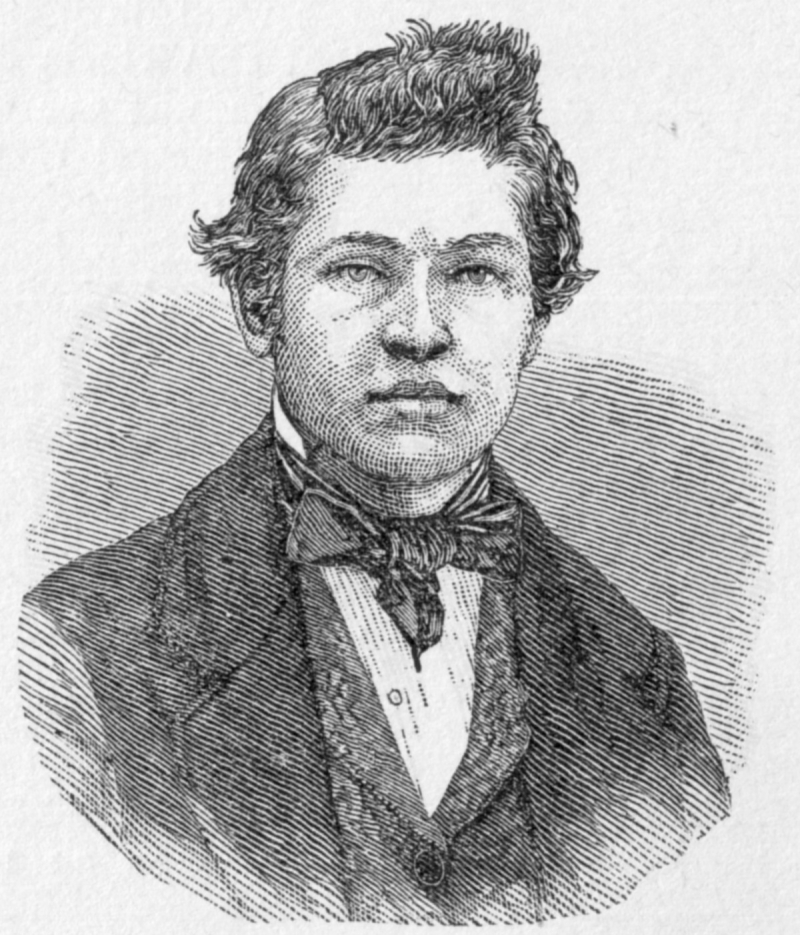
Photo: https://commons.wikimedia.org/ 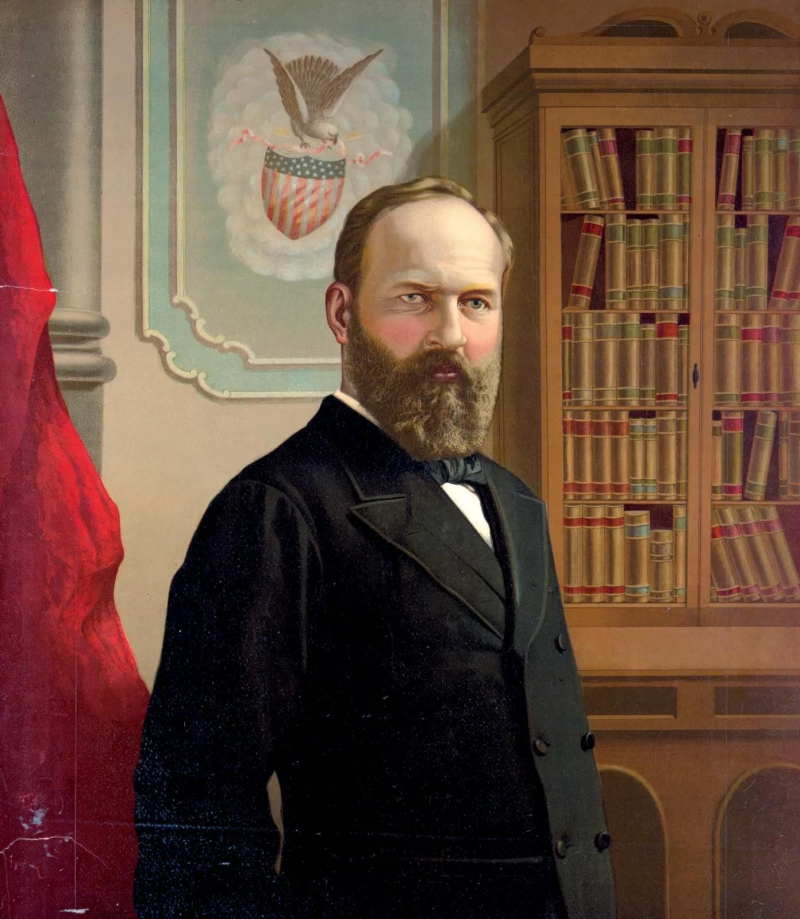
Photo: https://www.britannica.com/ -
Early on in life, James Garfield showed a passion for studying that served him well. Garfield was inspired to pursue a college education after learning that some New Englanders paid their way through school. He looked for a school that could help him prepare for the entrance exams. He studied at the Western Reserve Eclectic Institute (formerly known as Hiram College) in Hiram, Ohio, from 1851 to 1854. While there, he preferred to study Greek and Latin but was open to learning and discussing anything new he came across. He got a job right away as a janitor and while he was still a student got a job as a teacher.
Garfield next enrolled in Williams College in Williamstown, Massachusetts as a third-year student. After passing a brief test, he was given credit for two years of study at the Institute. Garfield joined Eclectic Institute as a professor of ancient languages and literature in 1856 after earning his degree with honors.
The diploma from a famous Eastern university made Garfield a man of distinction upon his return to Ohio. Even though he did not believe that the area of education would allow him to reach his full potential, he returned to Hiram to teach at the Institute and was appointed to be college president in 1857 at the age of 25. This is one of the most interesting facts about James Garfield.
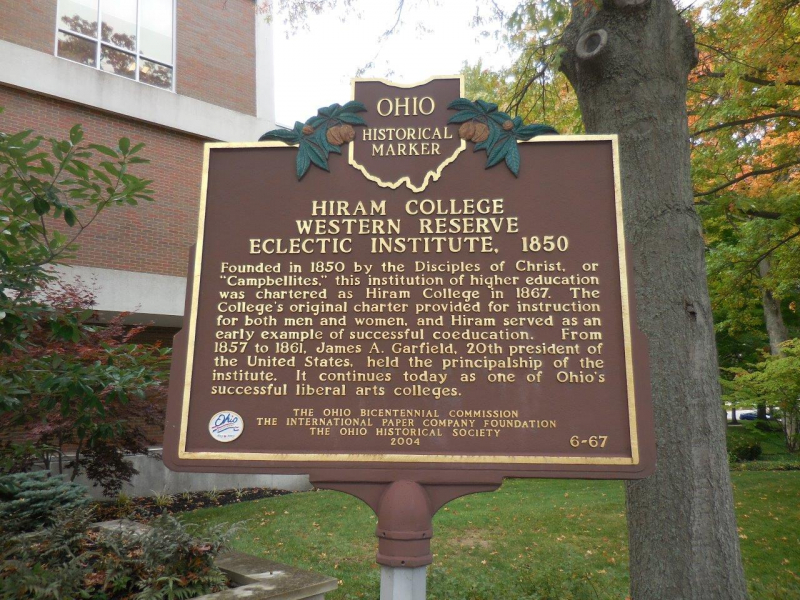
Photo: https://www.presidentsusa.net/ 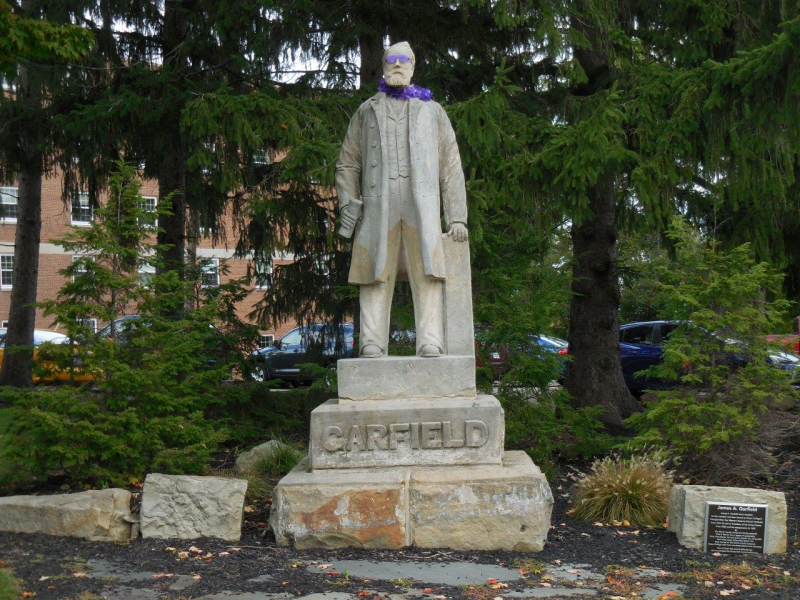
Photo: https://www.presidentsusa.net/ -
While attending Geauga Academy in Chester, Ohio, in 1849, James Garfield and his future wife had their first encounter. When she was a student at the Western Reserve Eclectic Institute in Hiram, Ohio, and he was a professor of ancient languages, they started dating two years later. The future First Lady excelled in school and made a strong impression on audiences. She studied ancient languages and literature while attending Western Reserve, where she also served as the literary society's president and the magazine's editor.
On November 11, 1858, James Garfield and Lucretia Rudolph married. Five of their seven children made it past infancy. Though he had studied at Hiram, he soon registered to read law at the Cleveland office of attorney Albert Gallatin Riddle. Mrs. Garfield, affectionately referred to as "Crete" by her loved ones, was appreciated for her independence of thought, style, and poise. She won particular praise for the dignity and grace she showed in the wake of her husband's passing.
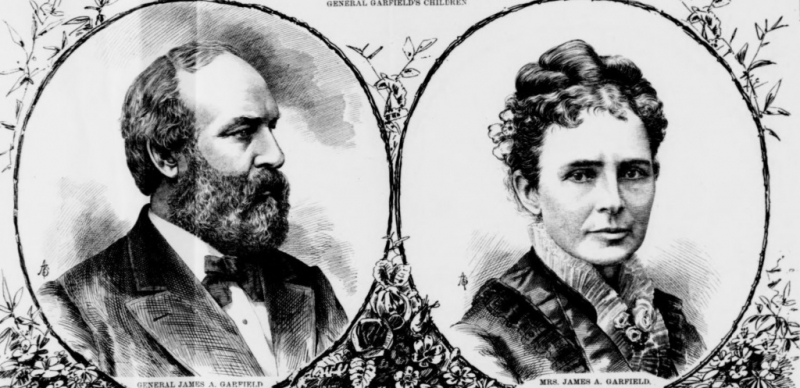
Photo: https://perilofafrica.com/ 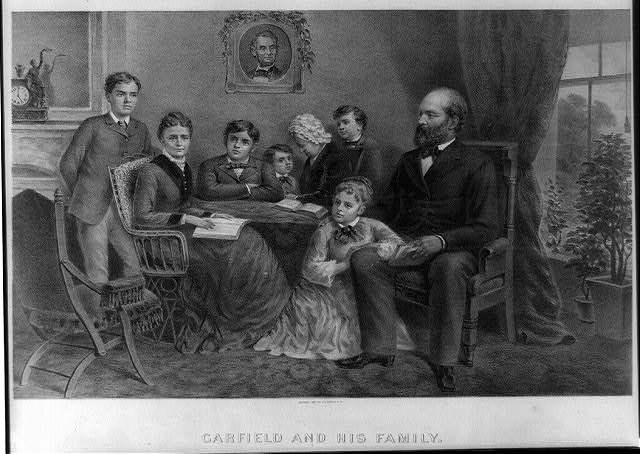
Photo: https://www.loc.gov/ -
According to James Garfield's facts, he participated significantly in the Civil War despite having no prior combat training. He joined the newly formed Republican Party as a proponent of free-soil ideas (against the expansion of slavery) and was elected to the Ohio assembly in 1859. He assisted in the 42nd Ohio Volunteer Infantry's recruitment during the Civil War, rising to the rank of colonel. He was elected to the U.S. House of Representatives in April 1862 after leading a brigade at the Battle of Shiloh. While waiting for Congress to convene, he served as the Army of the Cumberland's chief of staff, earning promotion to major general after excelling at the Battle of Chickamauga (September 1863).
Garfield served as the 19th congressional district's representative for Ohio for nine terms until 1880. He developed his expertise in financial problems while serving as the chairman of the House Committee on Appropriations. He promoted a high protective tariff and, as a Radical Republican, pursued a solid policy of Reconstruction for the South. The Ohio legislature chose him to serve in the Senate in 1880.
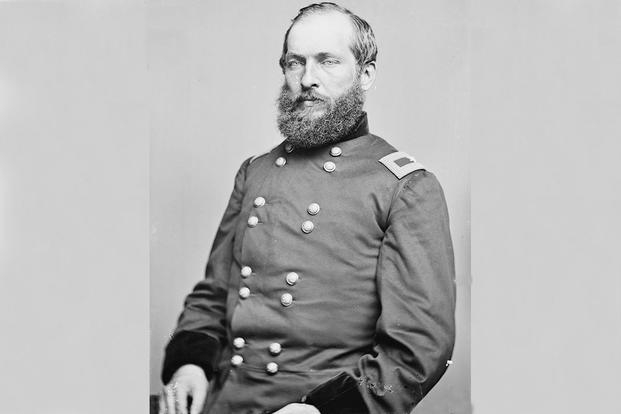
Photo: https://www.military.com/ 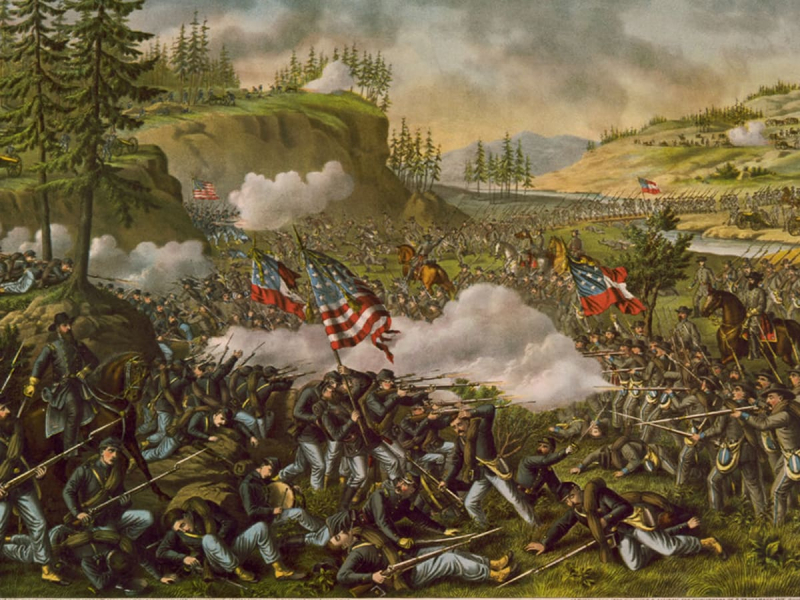
Battle of Chickamauga - Photo: https://www.history.com/ -
Known as one of the most interesting facts about James Garfield has he never pursued presidential office. Garfield believed that his purpose in being present at the 1880 Republican National Convention was to advocate for Treasury Secretary John Sherman, the party's nominee for president. Tall, bearded, personable, and eloquent Garfield led fellow Ohioan Sherman's campaign and won over many with his entirely impromptu nominating speech, which made him the center of attention rather than the candidate.
The unit rule, which allowed a majority of delegates from a state to cast the state's full vote, was repealed under the leadership of Garfield, the chairman of the Ohio delegation, and a group of anti-Grant delegates. Grant's campaign was doomed by this triumph, which increased Garfield's notoriety. Grant held a 35-vote advantage over the competition but was unable to secure a majority. On the 36th ballot, a dark horse named Garfield received the nomination; nevertheless, he was still attempting to withdraw his name from consideration as the bandwagon gained momentum.
In all of our history, "no man ever started so low and accomplished so much", observed former president Rutherford B. Hayes of Garfield. He was the only sitting House member to be elected president, defeating Democrat Winfield Scott Hancock in the race. Garfield once told friends that he was surprised by the entire process "This accolade was not sought after by me. Not even for a day have I ever experienced presidential fever."
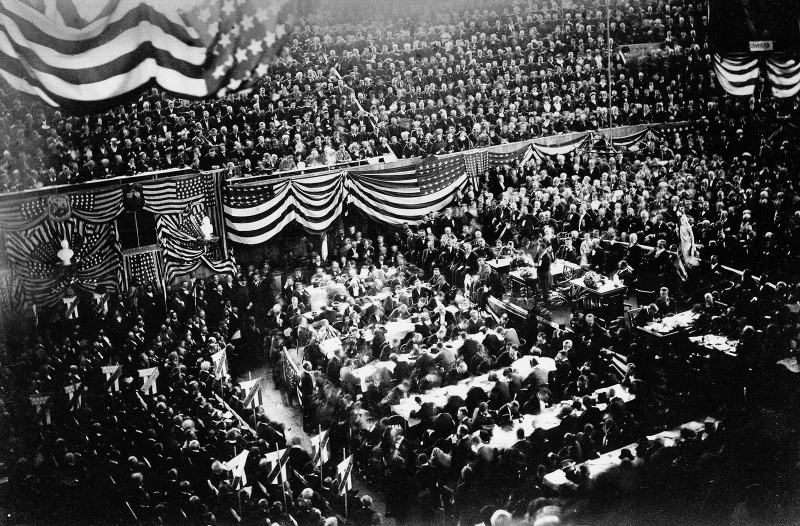
Photo: https://www.britannica.com/ 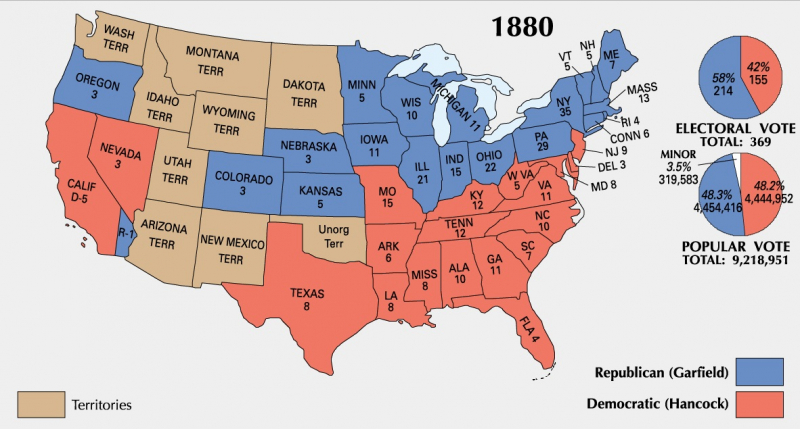
Photo: https://twitter.com/ -
Just a few weeks before the general election for president in November 1880, Garfield's political rivals attempted to endanger his campaign by disseminating a letter he had written to an acquaintance called H.L. Morey about the issue of foreign labor. In it, Garfield advocated for Chinese laborers, a contentious stance at a time when the nation was concerned about how immigration may influence employment. Democrats distributed tens of thousands of copies of the letter to discourage people from supporting him. The possibility of hiring immigrant labor ignited a riot in Denver.
Garfield initially kept quiet, but not because he was embarrassed by the letter. It was dated shortly after he was elected to the Senate, and he had signed many letters that he and his friends had sent in response to the congratulations messages he had received. He just couldn't recollect writing or signing it. However, after talking to his pals, he issued a denial. Later, after seeing a copy of it in a newspaper, Garfield declared it to be a fake. The term "H.L. Morey" didn't appear to exist, either. It turns out that the letter was planted by the adversary to tarnish Garfield's reputation. The letter's publisher, journalist Kenward Philp, was accused of fabrication and libel but was found not guilty. One witness who stated they had met Morey was sentenced to eight years in prison for lying.
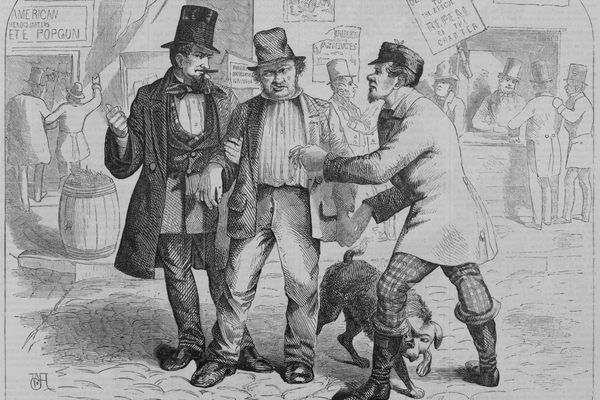
Photo: https://www.atlasobscura.com/ 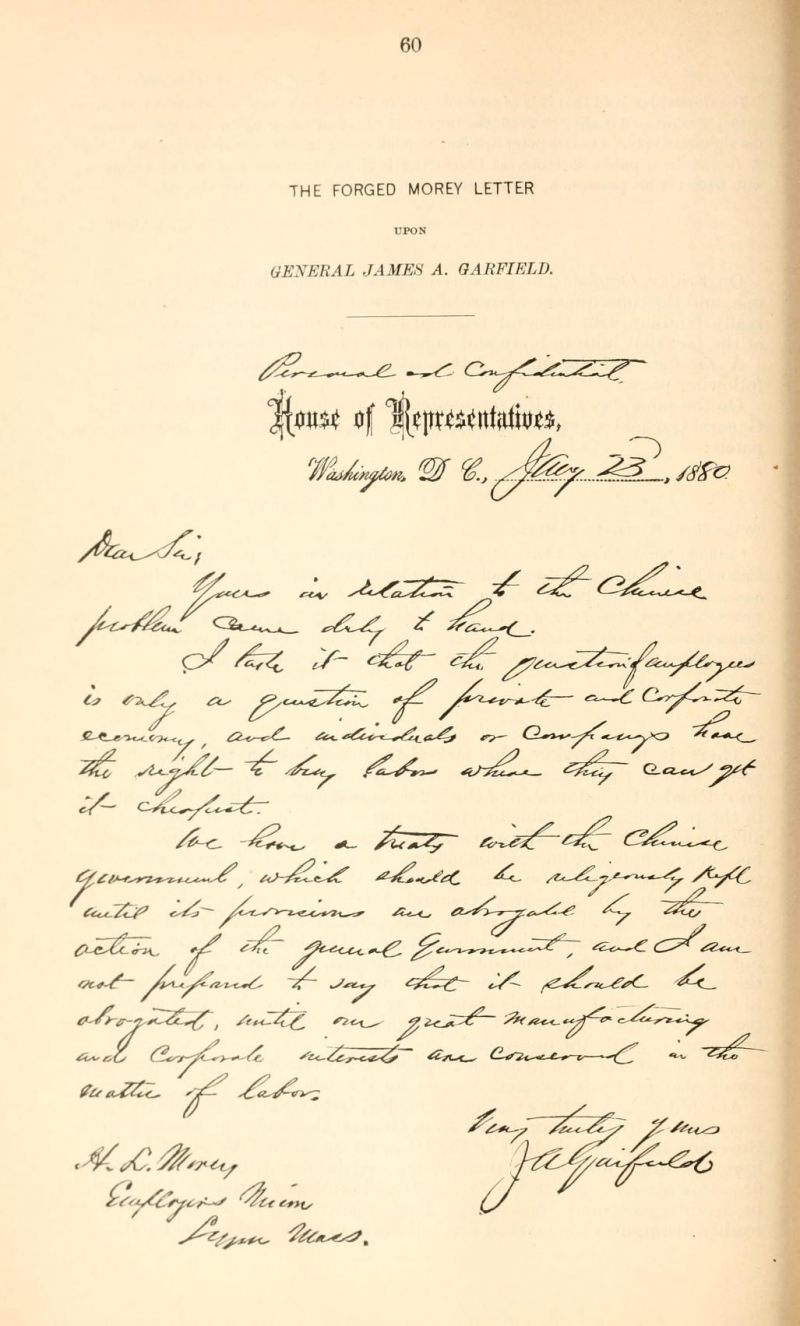
Morey letter - Photo: https://www.atlasobscura.com/ -
A few presidents in or around the time of Garfield, including Andrew Johnson and Woodrow Wilson, held unfavorable opinions on Reconstruction and civil rights. But Garfield was very explicit about what he thought. He declared in his inaugural address that the greatest significant political shift since the establishment of the Constitution in 1787 was the elevation of the Negro race from slavery to full citizenship. No reasonable person can overlook its positive impact on our institutions and people. Both the master and the slave have been freed from a relationship that has harmed and diminished both of them. In his dedication to the cause of civil rights, James Garfield put up key ideas for legislation that was later passed.
James Garfield's political platform was developed as a result of his ardent advocacy for civil rights and vehement opposition to government corruption. A federal statute enacted in 1883 under his initiative, the Pendleton Civil Service Reform Act, established the practice of assigning government employment based on qualifications rather than political affiliation. James Garfield advocated for a federally financed universal education program that would be free for all Americans in support of civil rights, and he selected freed slaves for government positions. In addition, Garfield named four black individuals to his administration, including activist Frederick Douglass as the District of Columbia's recorder of deeds.
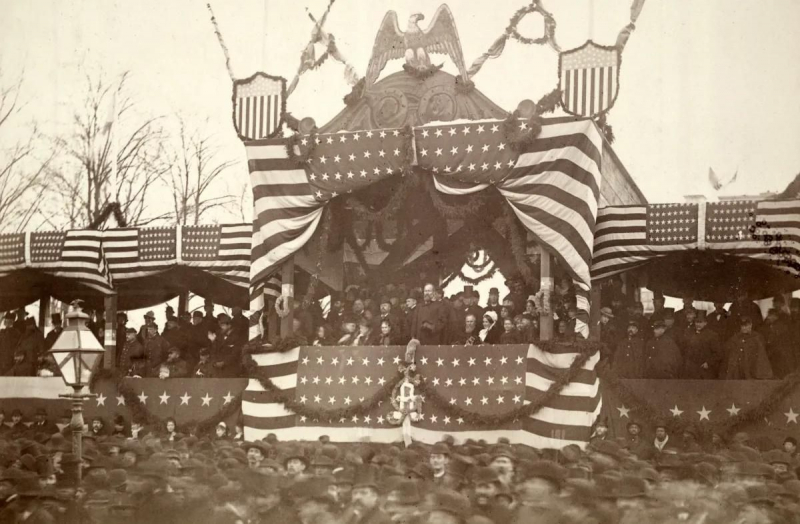
Photo: http://werehistory.org/ 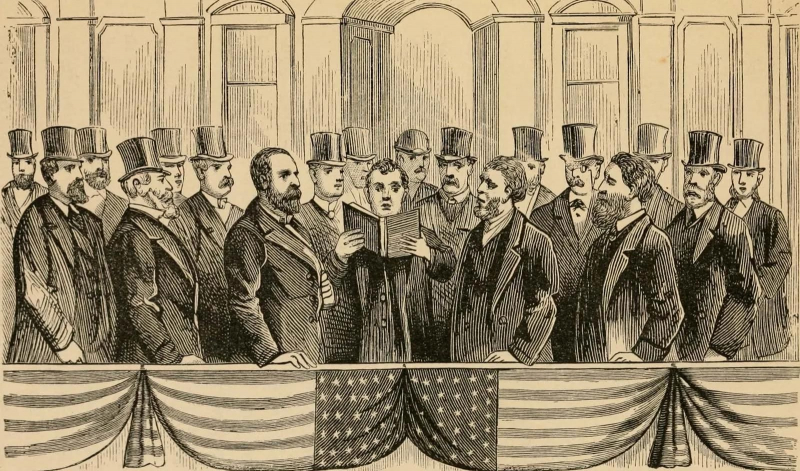
Photo: https://www.britannica.com/ -
After only four months in office, Garfield was assassinated on July 2, 1881, by Charles J. Guiteau, a resentful lawyer whom Garfield had rejected an appointment to an ambassadorship. The incident occurred as President Garfield was getting ready to leave for Williams College, where he was supposed to give a speech, at the Washington, D.C. train station. Robert Todd Lincoln, who was present at the station, was visibly distressed as he recalled his father Abraham Lincoln's assassination 16 years prior.
The first shot missed Garfield's arm completely, while the second one grazed him in the back and went behind his pancreas. "Assassination can be no more guarded against than death by lightning and it is not advisable to worry about either," Garfield wrote in a letter dated November 1880. Guiteau calmly declared, "I am a Stalwart, the current president of the United States is Chester Arthur", as he peacefully turned himself into the authorities.
Several doctors evaluated Garfield in a private office after being brought there on a mattress. Garfield was brought back to the White House at his request, and his wife who was at the time in New Jersey was requested. On September 19, 1881, James Garfield passed away in Elberon, New Jersey, after an illness and an abdominal hemorrhage.
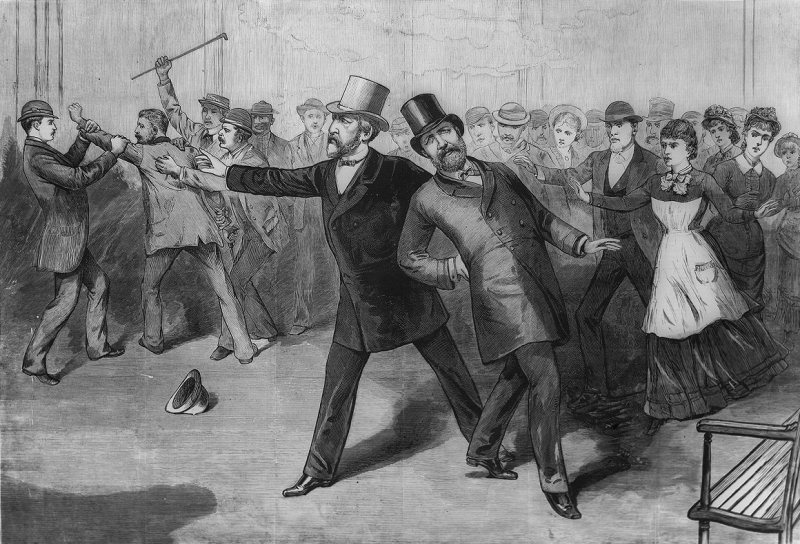
Photo: https://vi.wikipedia.org/ 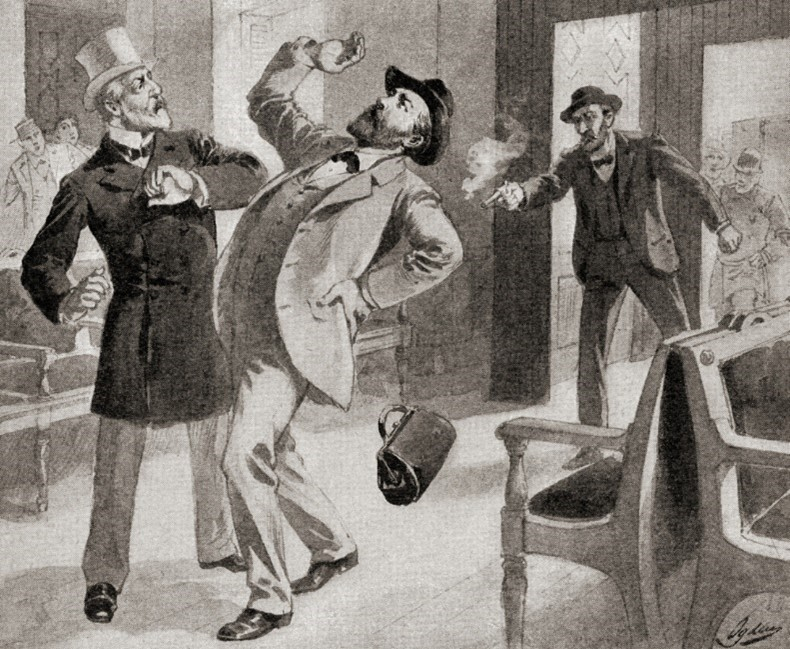
Photo: https://www.eriehistory.org/ -
James Garfield's facts reveal that none of the two shots that President Garfield received on July 2, 1881, from enraged office-seeker Charles Guiteau, were fatal. Garfield lay on the floor of the train station receiving medical attention from doctors who had just arrived at the site. Garfield's doctors, like the majority of the American medical profession, did not yet accept the beliefs of men like Joseph Lister and Louis Pasteur concerning germs, antiseptics, and sterilization, opting to hold the view that disease and illness were brought on by poor air quality.
President Garfield was treated by more than 12 different medical professionals, all of whom turned a non-fatal wound into a cesspool of infection and an abscess while searching fruitlessly for the bullet they could not detect and refusing to apply antiseptics. Garfield lingered in bed for two weeks as his caregivers tried to get rid of the projectile, but they only managed to make the infection and the cut in his stomach worse. Then came a splenic artery rupture, blood infection, and heart attack. Even Alexander Graham Bell's brand-new metal detector was used to help in the search. In the process, an illness spread throughout Garfield's body and ultimately claimed his life.
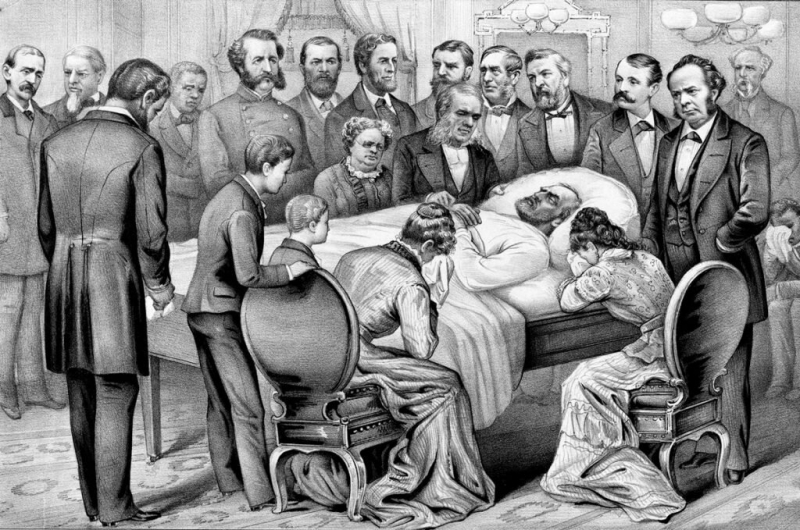
Photo: http://www.theexecutivepower.com/ 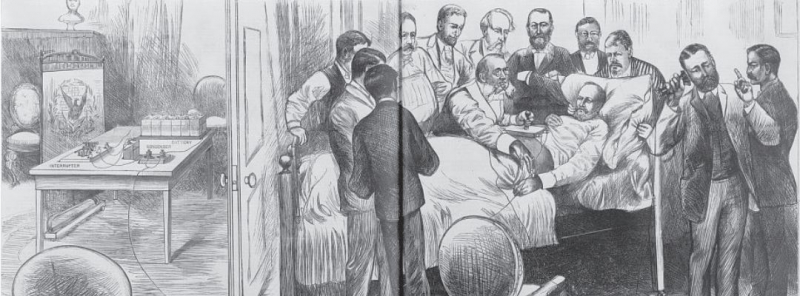
Photo: https://www.nps.gov/ -
The burial train for President Garfield departed Long Branch on the same unique track that had brought him there, passing through homes with flags flying and across tracks covered in flowers. His remains were brought to the Capitol before being moved on to Cleveland for burial. Following Andrew Jackson, Zachary Taylor, Millar Fillmore, James Buchanan, Abraham Lincoln, and Ulysses S. Grant, Garfield was the final of seven presidents to hold office in a log cabin. On the grounds of the Village Hall in Moreland Hills, Ohio, there is a duplicate of the original Garfield cabin (formerly Orange Township). The Moreland Hills Historical Society looks after and manages the James Garfield Memorial Cabin.
Garfield gained an honor on par with other notable American presidents within six years, despite his brief and rather uneventful presidency. The Garfield monument was unveiled in 1887 at the base of the Capitol building by sculptor John Quincy Adams Ward, who is arguably best known for his enormous bronze statue of George Washington, which is located on the grounds of his inauguration at Federal Hall in New York. Along the granite pedestal base of the statue, which features Garfield giving a speech, are three more figures: a pupil (marking Garfield's time spent teaching), a warrior (representing his time spent in the military), and an elderly man wearing a toga (to signify his political career).
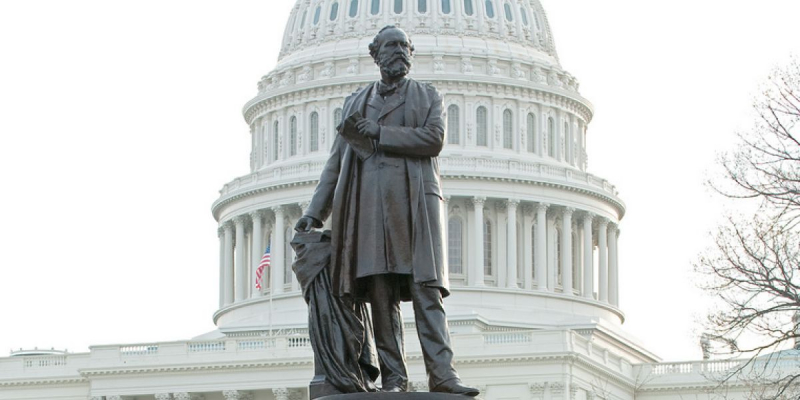
Photo: https://www.aoc.gov/ 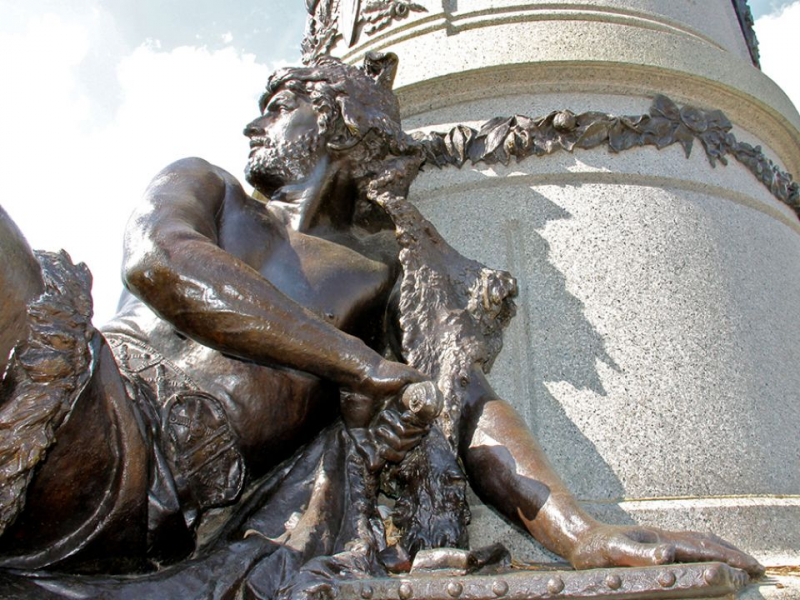
Photo: https://www.aoc.gov/













